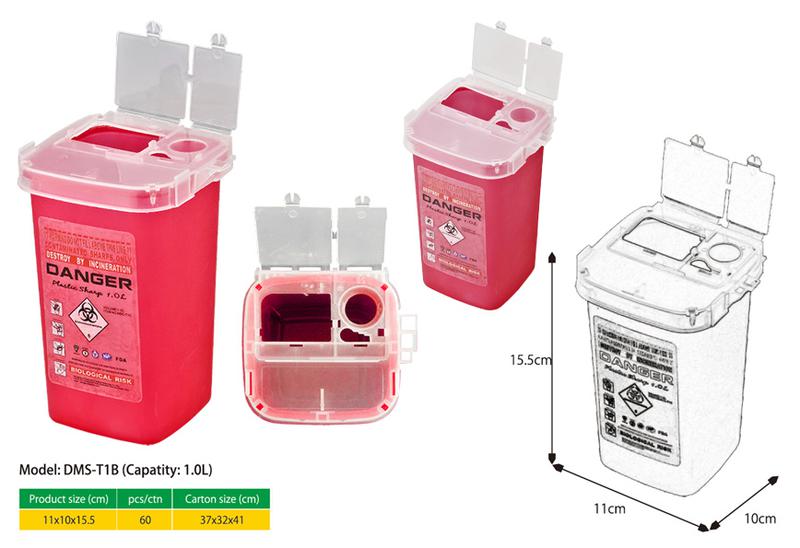Rapid management of acute pulmonary embolism
Among patients in the emergency department and ICU, the importance of pulmonary embolism in acute and severe respiratory system is self-evident, and rapid identification and proper treatment are the prerequisites for patient survival. Let your clinical first aid be targeted and take a look at some points that will help your treatment.
During the night shift in the emergency department, a middle-aged patient complained of chest tightness and dizziness and decreased blood pressure without chest pain. There was also no evidence to support acute coronary syndrome on the ECG. After symptomatic treatment, the patient's symptoms did not improve significantly. The results of plasma D-dimer made us highly suspected of pulmonary vascular embolism. After chest CTPA confirmed the clinical speculation, the patient was rescued by emergency thrombolysis.
One. The clinical signs of acute pulmonary embolism
1. Clinical manifestations are shock, hypotension (systolic blood pressure < 90 mmHg, or blood pressure drop more than 40 mmHg for 15 min), syncope, etc.
2. Signs of RV insufficiency: echocardiography showed RV dilatation, pressure overload, CT showed RV dilatation, right heart catheterization showed RV hyperpressure, pre-brain natriuretic peptide (BNP) or N-terminal brain natriuretic peptide Body (NT-proBNP) increased rapidly.
3. Positive myocardial injury markers TnI or TnT.
Two. Acute pulmonary embolism risk stratification standard and treatment strategy
1. High-risk pulmonary embolism cases (>15%) tend to have the following characteristics: shock or hypotension, right ventricular insufficiency with myocardial injury, and thus the treatment measures require emergency thrombolysis or surgical thrombectomy to improve as soon as possible. Cardiac function increases cardiac output.
2. Pulmonary embolism cases with moderate risk (3% to 15%) will have varying degrees of right ventricular insufficiency or myocardial damage, without peripheral blood pressure drop, shock and signs of low cardiac output. Therefore, quiet bed rest, oxygen therapy to improve oxygen and symptomatic treatment can be given.
3. Patients with low-risk pulmonary embolism (<1%) are often not accompanied by the above symptoms, without shock, dizziness, and changes in myocardial injury. Therefore, guidance and early discharge or outpatient follow-up treatment can be given.
Three. Commonly used clinical anticoagulation regimens
1. Unfractionated heparin: loading dose of 2000~5000 IU or intravenous injection of 80 IU/kg, followed by continuous intravenous infusion of 18 IU/kg/h, to make APTT reach and maintain 1.5 to 2.5 times the normal value as soon as possible.
2. Low molecular weight heparin: administered according to body weight (such as 100 IU/kg/time or 1 mg/kg/time, subcutaneous injection, 1 to 2 times a day).
3. Warfarin: The initial dose is 2.5 to 3.0 mg/d, and the INR is measured after 3 to 4 days. When it stabilizes at 2.0 to 3.0, stop using low molecular weight heparin and continue warfarin treatment. The duration of anticoagulation therapy is 3 months to long-term anticoagulation.
Four. Indications for Thrombolysis in Acute Pulmonary Embolism
1. Large pulmonary embolism with more than two lobes;
2. Regardless of the location and size of pulmonary thromboembolism, as long as there are changes in hemodynamics;
3. Complicated with shock and systemic arterial hypoperfusion (such as hypotension, lactic acidosis and/or decreased cardiac output, syncope);
4. Patients with circulatory failure caused by sub-massive pulmonary thromboembolism caused by the original cardiopulmonary disease;
5. Patients with pulmonary embolism with symptoms of respiratory distress (including increased respiratory rate, decreased arterial oxygen saturation, etc.);
6. Patients with sinus tachycardia after pulmonary thromboembolism.
Five, acute pulmonary embolism thrombolytic therapy contraindications
1. Absolute contraindications
(1) Active internal bleeding;
(2) Recent spontaneous intracranial hemorrhage.
2. Relative contraindications
(1) Major surgery, childbirth, organ biopsy or vascular puncture that cannot compress the hemostasis site within 2 weeks;
(2) Ischemic stroke within 2 months;
(3) Gastrointestinal bleeding within 10 days;
(4) Serious trauma within 15 days;
(5) Neurosurgery or ophthalmic surgery within 1 month;
(6) Severe hypertension that is difficult to control (systolic blood pressure > 180 mm Hg, diastolic blood pressure > 110 mm Hg);
(7) Cardiopulmonary resuscitation has been performed recently;
(8) pregnancy;
(9) bacterial endocarditis;
(10) Severe liver and kidney insufficiency;
(11) Diabetic hemorrhagic retinopathy;
(12) bleeding disorders;
(13) Aneurysm;
(14) Left atrial thrombus;
(15) Age > 75 years
Six. Commonly used thrombolytic drugs and their usage in clinic
1. Urokinase injection: loading volume of 4400 IU/kg, intravenous injection for 10 minutes, followed by continuous intravenous infusion of 4400 IU/kg/h for 12 to 24 hours; or a 2-h thrombolytic regimen: 3 million IU continuous intravenous infusion Note 2h. 20000 IU/kg/2h intravenous infusion.
2. rt-PA: 50-100mg/2h continuous intravenous infusion.
Acute pulmonary embolism is an acute and severe clinical respiratory system, and it is also a high-morbidity and frequently-occurring disease. Whether the treatment is appropriate is the premise of the patient's survival and prognosis. Therefore, being familiar with the principles of emergency treatment and the key points of rapid treatment is an essential skill for doctors in emergency departments and ICUs.

